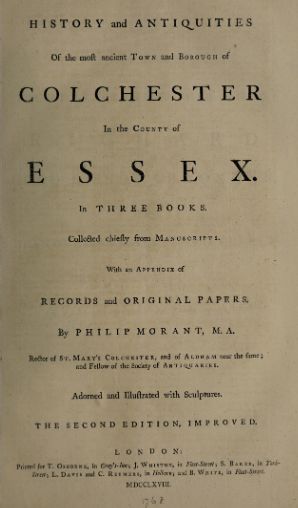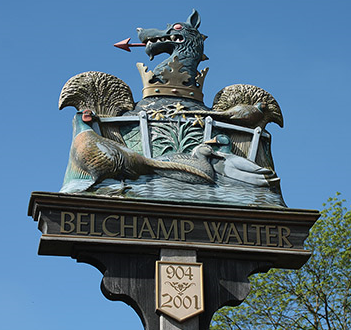The derivation of the Name Belchamp Walter
Over the time I have lived in the village I have researched the origins of the village name for Belchamp Walter. To the modern ear the name seems French in origin and that is quite a fair assesment concidering that the Norman's have quite an influence in England and in this part of East Anglia in general.
The Belchamp part of the name is likely, as P. H. Reaney says, to have been derived from the Anglo Saxon and not the French. There is certainly a reason to think that the "Bel" is similar to "Beau" as there are historical connections to the de Beauchamp family. Belcampo, would combine the "good" or "beautiful" with the "camp", "land" or "place". The Belc for "lump" or load" or Byle for "ridge" combined with the "ham" is also a fair assumption.
The Walter part of the name is even more interesting as it is more complicated than just the combination of a local possible residents or "owners/managers/overseers" of the area. This is discussed in the history that was found on the Village Hall website and the alternatives of Belchamp William, Water Belchamp and Belchamp Simon are credible names for the region.
The history of the village as originally posted on the Village Hall website, whose author is unknown, makes an interesting comparison to the research performed by this website.
Background
When I started to research the history of the Village of Belchamp Walter I began with the information sheet that was available in the Church.
Around the same time I was given the task of maintining the Village Hall Website. The previous webmaster had posted information about the village but was unaware of who the author of the information that is there. Although it is not known who the author was, I have a general suspicion. The text does quote the Reverand Philip Morant (1700-1770) as a source, and I have found a scan of the document cited.
It also cites P.H. Reaney (1939) but there is no reference to Thomas Wright (1831/36).
The village history from the Village Hall website
This could be the reason that the date of 904 on the Village sign. I have searched Cartularium Saxonicum (the preview available on line) for both 904 and 940. I did not find any reference to Bylc, Belcham or Thunderlow.
More from the Village Hall description:
Philip Morant
The history and antiquities of the County of Essex. Compiled from the best and most ancient historians; from Domesday-book, Inquisitiones post mortem, and other the most valuable records and mss. &c., the whole digested, improved, perfected, and brought down to the present time by Morant, Philip, 1700-1770.

Cartularium Saxonicum
This is availble for purchase from Google Books. You can preveiw pages and search it for content. See also my page on Cartularium Saxonicum.
Apart from the fact that it is mostly written in Latin and has Anglo-Saxon spellings and alphabet, dates such as 904 can be searched for in the text. Nothing was found for 904 (or even 940)
Background to this page
Having seen some of my history pages being found by those making an Internet search I have decided to add a bit more context on how the pages came about.
Facebook Click ID
Since launching this page I notice that it has been accessed by some Facebook users. While this is not a bad thing it did bring to my attention the use of the fbclid parameter in the URL accessing the page.
While this doesn't bother me, in fact it is a way of me metering whether Facebook posts are attracting any visits to this website, it does raise the question of why Facebook are doing this. In addtion, which respect to the name of the village, I am left with not knowing what attracted the visits in the first place. Was it Belchamp Walter or was it a reference to one of the books mentioned on this page. Cartularium Saxonicum, The Rev’d Phillip Morant in his History and Antiquities of the County of Essex or The Place-Names of Essex by P. H. Reaney.
